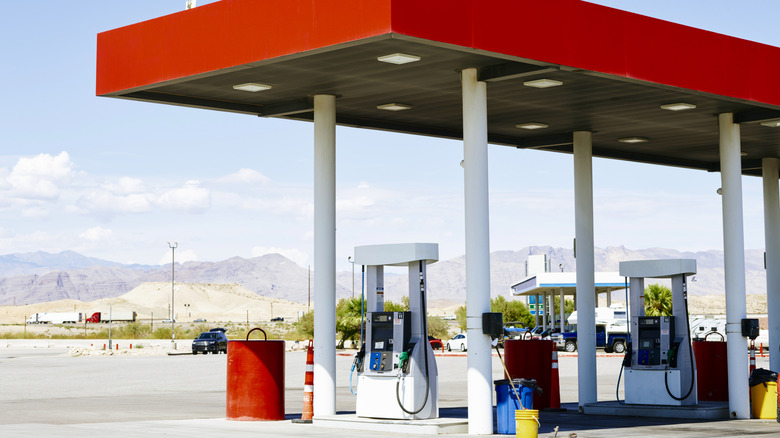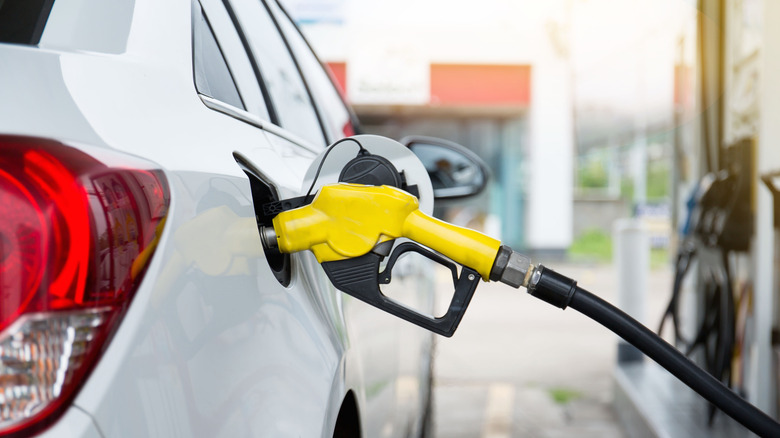When Does Summer Blend Gas Start And Why Is It More Expensive?
You may have noticed that filling your tank costs a little more throughout summer than it does in winter. Of course, fluctuating gas prices might mean that no single fill-up costs the same as the last, but there is more at play here than first meets the eye. This is because gas prices will change due to which blend is being pumped out, and there are two options here: summer blends and winter blends — much in the same way that winter diesel fuel exists, too.
These different blends exist mainly due to weather stipulations. In summer, gas has an increased chance of evaporating due to higher temperatures, which is bad for air quality. According to the United States Environmental Protection Agency, Americans are breathing cleaner air as a direct consequence of this seasonal fuel program, and there are other benefits, too. For example, the winter blend sports a higher concentration of butane, as this helps to improve a car's cold-starting performance. Furthermore, butane is inexpensive, and this higher concentration is primarily why gas is cheaper during the winter. To be precise, most estimates suggest that summer gas is up to $0.15 more per gallon than winter gas, due to an average 2% concentration of butane, in contrast to the 10% found in winter blends.
Refineries and gas stations are mandated by the EPA to roll out summer blends
The cost of filling up a tank is a dealbreaker for many car owners, which is why 19% say they're very likely to buy an electric car because of high gas prices. Lovers of cheap gas may now feel like hunting down winter blends during the hotter months, in an attempt to save precious pennies. However, it's actually a legal requirement stipulated by the EPA that both refineries and gas stations start pumping out summer blends by a certain date each year.
Between March and April, refineries will begin to produce up to 14 different summer blends of gasoline. Different states require different blends, due to their individual regulations and requirements. By May 1, it's a legal requirement that refineries and fuel terminals must sell only summer blends, while gas stations are given an extra month's leeway. By June 1, though, they must also offer exclusively summer blends, until September 16, when winter blends can once again be rolled out. It's worth noting that in times of crisis, the EPA does have the power to waive these requirements. Recent examples include the summer of 2022, when Russia's invasion of Ukraine and steep inflation hikes led to soaring gas prices. By allowing gas blends with higher ethanol contents to be offered, the EPA managed to limit the price hikes seen across the nation's gas stations. This was controversial though, as ethanol can be bad for your engine's health, since it can corrode parts of the fuel system.

